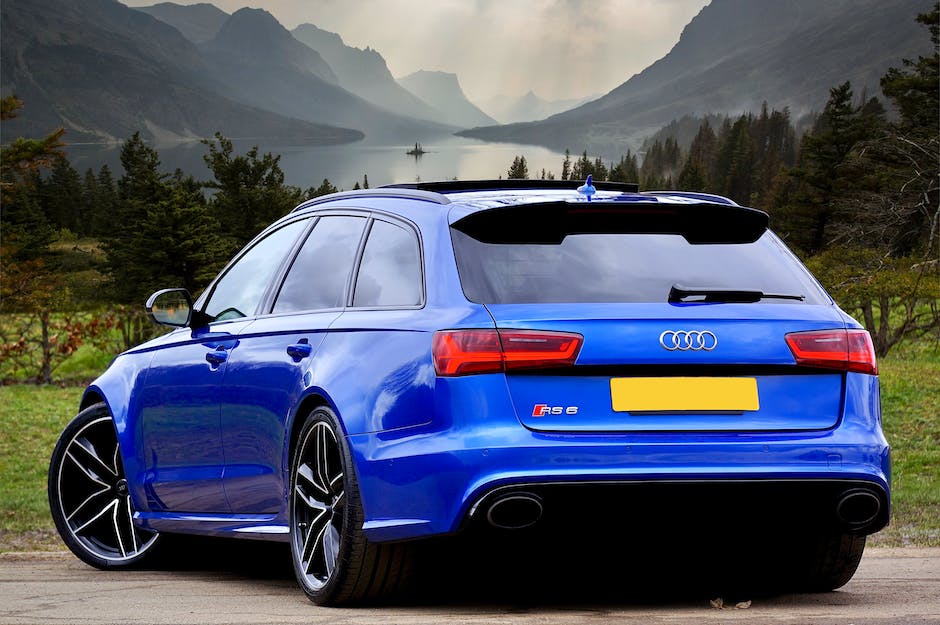In the realm of luxury sports utility vehicles (SUVs), few names evoke a sense of nostalgia and rugged sophistication like Jeep’s iconic Wagoneer and Grand Wagoneer. Emerging from a legacy of distinction and world-renowned engineering, these models have transformed the landscape of the automobile industry since their inception. The secret to their enduring success is the harmonious blend of performance, style, and comfort – they embody the spirit of adventure while providing a plush, modern driving experience. This discussion will navigate you through the historical journey of each model, draw a detailed comparison of their specifications, dissect their road performance, illuminate their luxury features, and finally, evaluate their market pricing and overall value.
1.Overview and History of Wagoneer and Grand Wagoneer
Jeep, an automobile brand synonymous with off-road capabilities, introduced the Wagoneer in 1963. It was the first four-wheel-drive vehicle equipped with an automatic transmission, setting a new precedent in the automobile industry. The Wagoneer offered a blend of luxury and comfort combined with ruggedness and utility. In essence, the Wagoneer was the pioneer of the Sport Utility Vehicle (SUV) segment, decades before the term became mainstream.
Evolution Over Time: Wagoneer vs Grand Wagoneer
Over the years, both the Wagoneer and the Grand Wagoneer went through several design changes and technological upgrades. The Wagoneer continued to be the rugged, reliable workhorse, popular among families who loved the outdoors and needed the blending of on-road refinement with off-road abilities.
On the other hand, the Grand Wagoneer continued to strive for more luxury and comfort features, making it a preferred vehicle for premium buyers. This included higher-quality interior materials, upgraded sound systems, refined wood finish, and an overall enhanced driving experience. Both maintained their individual reputations, the Wagoneer as the practical, versatile SUV and the Grand Wagoneer as the flagship luxury 4X4.
Reputation in the Automobile Industry
Despite the Wagoneer and Grand Wagoneer being products of the same manufacturer, they carved out distinctly separate identities for themselves. The Wagoneer was seen as the more accessible, practical choice for families, with its motto being functionality above all. Its spacious interiors, four-wheel-drive capabilities, and affordability made it admired in its segment.
The Grand Wagoneer, on the other hand, was often compared to luxury vehicles, thanks to meticulous attention to comfort and opulence. Its interiors were graced with leather and fine wood, high-quality entertainment systems, power systems, and a host of other features that were quite uncommon at the time. Its market price hovered comfortably above the Wagoneer – unabashedly so, considering its list of high-end features.
Significant Milestones: Wagoneer and Grand Wagoneer
As the pioneers of the SUV segment, both Wagoneer and Grand Wagoneer have weathered the industry’s changes and demands over the years. One of the significant milestones of the Wagoneer was its introduction of the Quadra-Trac, the first automatic full-time four-wheel-drive system in 1973. It revolutionized the 4X4 experience, allowing the drivers to take on rough terrains without having to manually engage the four-wheel-drive system.
On the other hand, the Grand Wagoneer’s milestone was being marketed as the first luxury 4X4, a segment that today dominates the industry with popular names like Range Rovers and Mercedes G-Class. It not only symbolized status, but it also had the abilities to match, providing the best of both off-road and on-road luxuries.
The Fresh and Innovatively Modern Wagoneer and Grand Wagoneer
In the current era, both the Wagoneer and Grand Wagoneer have made a grand comeback, embracing modern design aesthetics, state-of-the-art safety measures, and cutting-edge technology. Despite these advancements, they continue to resonate with their nostalgic roots, offering a driving experience imbued with the pioneering spirit that has always formed the core of Wagoneer and Grand Wagoneer’s role in the automotive world.
2. Comparison of Specifications

Comparing the Engines and Horsepower: Wagoneer against Grand Wagoneer
The revived Wagoneer offers a powerful 5.7-liter V8 engine, providing a substantial 392 horsepower in conjunction with a 48-volt mild hybrid system. This combination ensures a seamless driving experience along with reliable strength under the hood.
Contrastingly, the Grand Wagoneer steps up the game with a more potent 6.4-liter V8 engine, delivering an impressive 471 horsepower. It may not come along with the mild hybrid system like its counterpart, but its larger engine makes up for it by producing considerably more power. This additional power establishes the Grand Wagoneer as the optimal pick for those seeking a more robust, high-performance vehicle.
Fuel Economy: Performance Meets Efficiency
For a more fuel-efficient choice, the Wagoneer leads the way. It’s estimated to offer a fuel economy of 16 miles per gallon in the city and 22 miles per gallon on the highway.
In contrast, the larger engine in the Grand Wagoneer results in a lower fuel efficiency. The Grand Wagoneer has an expected fuel economy rating of 13 miles per gallon in the city and 18 miles per gallon on the highway.
Type of Drive: Ruggedness and Control
Both the Wagoneer and the Grand Wagoneer are equipped with a rear-wheel-drive system as standard, but both models offer an optional four-wheel-drive system. This choice gives drivers the flexibility to opt for increased stability and control, especially on difficult terrains.
Interior Design: Deluxe Meets Sophistication
Inside the cabin, both Wagoneer models offer a three-row seating arrangement, housing up to seven or eight passengers, depending on the configuration chosen.
The Wagoneer offers an upscale interior, featuring leather upholstery, wood trim, and large touchscreens for infotainment and climate control.
The Grand Wagoneer takes luxury up a notch, introducing features like diamond-quilted seats, a suede headliner, and real wood accents. It also offers a more advanced tech package, which includes a digital instrument cluster, a head-up display, and a McIntosh sound system.
Exterior Design: Timeless charmer vs Modern Impression
The exterior of the Wagoneer features a traditional design that pays homage to its predecessors. A seven-slot grille, squared-off design, and the ‘Wagoneer’ badge on the hood give it a distinctive and recognizable appearance.
Conversely, the Grand Wagoneer manifests as a modern take on the classic design. It inherits the seven-slot grille but adds a sophisticated finish with chrome accents. The LED lights and ‘Grand Wagoneer’ script on the hood add to its contemporary style.
Dimensions and Key Specifications
The Wagoneer and Grand Wagoneer are both designed with a focus on providing plenty of interior space. Although, the Grand Wagoneer takes this an extra notch higher, boasting slightly larger dimensions. This translates into a more spacious interior and larger cargo area, making it highly suitable for a variety of usage scenarios. Significantly, the Grand Wagoneer also outshines the Wagoneer with its superior towing capacity, facilitating more efficient towing of heavy loads, or enhancing the adventurous outdoor family experiences.
Thus, with variations in performance, luxury, and size, the Wagoneer and Grand Wagoneer offer a spectrum of options. Potential buyers can easily select a variant that addresses their specific requirements and personal preferences.
3. Performance and Road Handling

Comparative Assessment: Performance and Road Handling
Under the hood, the Wagoneer series prominently features a 5.7-liter V8 engine, which generates a power of 392 horsepower and torque of 404 pound-feet. This power delivers a smooth drive experience with the help of its eight-speed automatic transmission. On the opposite side, the Grand Wagoneer flexes with a larger, 6.4-liter V8 engine. It delivers more power – 471 horsepower and 455 pound-feet of torque. Therefore, while the Wagoneer offers a respectable acceleration, the Grand Wagoneer steals the show with more swift and smooth acceleration, thanks to its larger engine.
Both these models impress with their efficient braking capabilities. Equipped with large brake rotors measuring 14.9 inches at the front and 14.8 inches at the rear, they offer powerful stopping power. This feature greatly contributes to the reliable stopping of these large SUVs, inspiring confidence in the driver.
When it comes to handling, both models are characterized as sophisticated and well-poised, especially given their extensive three-row build. However, some critics have mentioned a slightly floaty feel to the handling of the Wagoneer, as compared to the Grand Wagoneer. Additionally, both the Wagoneer and Grand Wagoneer offer excellent turning capabilities, largely thanks to the four-wheel steering system. This feature not only improves low-speed maneuverability but also contributes toward stability when cruising at highway speeds.
Off-Road Capabilities
When it comes to tackling diverse terrains, both the Wagoneer and the Grand Wagoneer are in their element. Each model boasts of three 4×4 systems and an impressive 10-inch ground clearance. An optional air suspension that can adjust the vehicle’s height for varying trail difficulties or for easing access is also available.
The Grand Wagoneer stands out with its Quadra-Lift air suspension and Selec-Terrain traction management system that can adapt to outside conditions, making it an off-road beast. The Wagoneer doesn’t disappoint either, bringing to the table an optional Selec-Terrain system with five driving modes – Auto, Sport, Rock, Snow, and Mud/Sand. This system helps the vehicle perform optimally in a vast range of surface conditions.
By and large, both models have earned admirable feedback from consumers, particularly for their dual competence both on and off-road. However, these highlights may not hold equal appeal for every driver. For those seeking potent engine power or superior off-road abilities, the Grand Wagoneer may be the better choice. Conversely, those who need a car for everyday use and family transportation could lean more towards the Wagoneer.
4. Comfort and Luxury

Comfort and Luxury: Wagoneer vs Grand Wagoneer
While both the Wagoneer and Grand Wagoneer promise an experience brimming with comfort and luxury, the Grand Wagoneer takes opulence a notch higher. Although they share several features, distinct elements set the Grand Wagoneer apart as the premium model.
Interior Space and Seating
Both vehicle interiors deliver on spaciousness and feature three rows of seats, comfortably seating up to eight people. With a variety of seating configurations, they offer flexible and convenient options. The Wagoneer’s interior is designed with either cloth or Nappa leather seats while the Grand Wagoneer boasts of premium quilted Palermo leather seating as a standard, adding an elegant touch.
Infotainment
Both SUVs come with the Uconnect system, offering wireless integration with Apple CarPlay and Android Auto. The Grand Wagoneer, however, ups the ante with multiple touchscreen displays including a 10.1-inch main screen, a second 10.25-inch screen specifically for the passenger, and an additional rear-seat entertainment system with dual 10.1-inch touchscreens. The Wagoneer offers a more straightforward setup with a 10.1-inch touchscreen and an optional rear entertainment system.
Storage Space
Both the Wagoneer and the Grand Wagoneer provide generous storage space. With all the seats in place, they offer around 27 cubic feet of cargo space which increases to almost 116.7 cubic feet when the second and third row seats are folded. Regardless of the selection, ample space for all sorts of gear is guaranteed.
Safety Features
Safety-wise, both vehicles come equipped with pioneering technology to offer protection for all occupants. Features such as Forward Collision Warning, Active Lane Management, and Blind Spot Monitoring come standard. However, the Grand Wagoneer furthers the safety features by also offering a Night Vision Camera with Pedestrian and Animal Detection, and a Head-Up Display, standing out as the more safety-conscious option.
5. Pricing and Value for Money

Photo by nietramos_d on Unsplash
Pricing Comparison: Wagoneer and Grand Wagoneer
When it comes to pricing, the Wagoneer takes the edge. Starting around $59,000 for the base model, it is an affordable pick for those considering a luxury SUV without a hefty price tag. Conversely, the Grand Wagoneer asks for a more premium starting price of approximately $88,000, placing it higher in the luxury SUVs league. This price leap owes itself to the Grand Wagoneer’s bountiful high-end features, like premium Nappa leather upholstery and the standard McIntosh audio system.
Ownership Costs: Wagoneer and Grand Wagoneer
The overall ownership costs for both the Wagoneer and Grand Wagoneer aren’t just limited to the purchase price. When you factor in costs such as insurance, maintenance, and fuel efficiency, there are some differences to consider. The Wagoneer, for instance, returns an EPA-estimated 15 miles per gallon in the city and 20 miles per gallon on the highway. The Grand Wagoneer, on the other hand, is slightly less fuel-efficient with EPA estimates of 13 miles per gallon in the city and 18 miles per gallon on the highway.
As you’d also expect with higher-end vehicles, insurance costs are typically higher due to the cost to repair or replace parts. However, these costs can vary greatly depending on location, driving history and other factors. Therefore, it’s important potential buyers check this with insurance providers for exact quotes.
Depreciation: Wagoneer vs Grand Wagoneer
As with other luxury vehicles, both the Wagoneer and Grand Wagoneer are expected to experience depreciation. Most new vehicles depreciate the most in the first few years of ownership. However, luxury SUVs like these often maintain higher resale values than other segments due to their attractiveness on the used-car market.
Resale Value and Maintenance Costs
While exact depreciation rates for the Wagoneer and Grand Wagoneer are not available due to them being recently reintroduced models, given Jeep’s reputation for maintaining strong resale values, one might expect these SUVs to follow similar trends.
Maintenance costs on both SUVs are expected to be higher than average compared to non-luxury vehicles due to the higher cost of parts and specialized labor. However, the Grand Wagoneer could potentially have higher costs due to its more sophisticated systems and features.
Value for Money
Overall, whether the Wagoneer or Grand Wagoneer presents better value for money rests largely on individual buyer’s expectations and needs. If high-end luxury features, superior power, and exclusivity are of high importance, the Grand Wagoneer would be worth the steeper price. However, if one is seeking a balance between pricing and a luxury driving experience, the Wagoneer might be the more practical choice.

Jeep’s Wagoneer and Grand Wagoneer, equipped with their storied lineage and innovative spirit, undeniably possess features that set them apart in the crowded SUV marketplace. Both have effectively managed to integrate the traditional Jeep DNA with modernity and luxury. However, as extensively delineated, their precise specifications, performance, comfort levels, and pricing nuances diverge, thereby offering a different experience to potential buyers. The crucial takeaway is that making a choice between the two inevitably boils down to individual preference, purpose, and budget. Thus, it’s imperative for potential buyers to carefully analyze their needs against what each model offers, in order to truly discern which one presents a better fit and better value for their unique requirements.
Conclusion
Ultimately, the Wagoneer and Grand Wagoneer are both dedicated to delivering ultimate comfort, luxury, and convenience. However, for those seeking something more, the Grand Wagoneer extends further sophisticated features and refinements.
Dive Deeper

